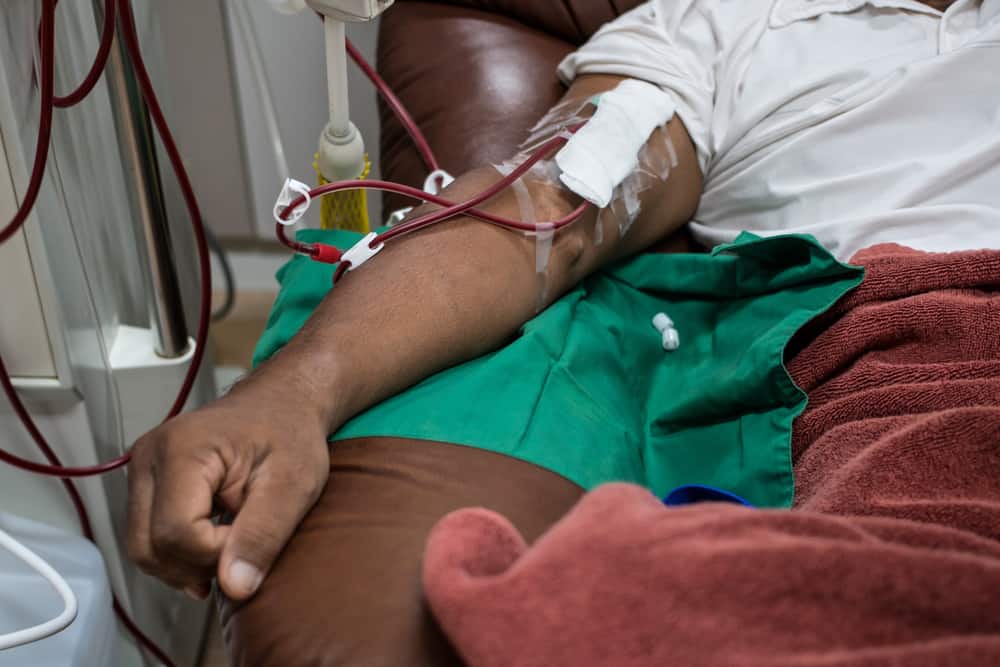Contents:
Medical Video: Cold Agglutinin Disease
Definition
What is cold agglutinin?
A blood test for cold agglutinin is a test to check a condition when the body forms several types of antibodies called cold agglutinin. In general, cold agglutinin is produced by the body's immune system in response to infection. This type of antibody causes red blood cells to clot (agglutination) at low temperatures.
Blood in healthy people generally contains low levels of cold agglutinin. But lymphoma or infection, such as mycoplasma pneumonia, can make the production of cold agglutinins increase.
The level of cold agglutinin above the normal limit is generally not a serious problem. In response to cold, high levels of cold agglutinin cause blood to clot in blood vessels under the skin. This causes the skin to become pale and numb hands and feet. However, the skin will return to normal after being warmed. In some cases, clots of blood cells can stop blood flow to the tips of fingers, toes, ears, or nose. This case is similar to frostbite or frostbite which affects body tissue damage. In rare cases, clots of blood cells can cause gangrene.
Sometimes, high levels of cold agglutinin can destroy red blood cells throughout the body. This condition is called autoimmune hemolytic anemia (or autoimmune hemolytic anemia).
When do I have to undergo cold agglutinin?
This test is given to someone who is sensitive to cold temperatures and shows symptoms of hemolytic anemia which may be caused by cold agglutinin disease. Symptoms include:
- tired, weak, lack of energy, pale skin, dizziness and / or headache from anemia
- in some cases, limbs such as fingers, legs, ears, and nose are painful and turn blue when exposed to cold
Prevention & warning
What should I know before undergoing cold agglutinin?
More than half of patients with pneumonia caused by mycoplasma have high levels of cold agglutinin. So, the latest test for mycoplasma pneumonia is made which can replace the cold aglutinin blood test. However, if a red blood cell clot (called a Rouleaux formation) is seen through a complete blood count (CBC) test, the doctor may recommend that you take a cold agglutinin test. Before conducting a blood transfusion or organ transplant, a blood type test needs to be done to ensure that the blood of the donor and recipient is suitable. A person with blood containing high levels of cold agglutinin may have difficulty typing.
Parents have high levels of cold agglutinin titers and tend to remain (unchanged) for years. Cold agglutinin tests may be rarely used to identify an increase in cold agglutinin in patients diagnosed with secondary cold agglutinin disease, such as infection with mononucleosis or mycoplasma pneumonia infection. Because it is not intended for such specific conditions, this test is not used.
Process
What should I do before undergoing cold agglutinin?
There is no special preparation before undergoing this test.
How is the process of agglutinin cold?
The medical personnel who are in charge of taking your blood will take the following steps:
- wrap an elastic belt around your upper arm to stop the blood flow. This makes the blood vessels under the bond enlarge making it easier to inject needles into the vessels
- clean the part to be injected with alcohol
- inject a needle into a vein. More than one needle may be needed.
- attach the tube to the syringe to fill it with blood
- remove the ties from your arms when taking blood is enough
- attach gauze or cotton to the injected part, after the injection is finished
- put pressure on the part and then put on a bandage
What should I do after undergoing cold agglutinin?
The medical officer will wrap the arm using an elastic strap to feel a little tight. Then, a small needle will be injected right in the vein. This process is relatively fast without pain. The pierced needle may only feel like a sting or small pinch. Remove the tape and cotton after 20 to 30 minutes. After that, you just have to wait for the results of the test to come out. The doctor will explain the test results and provide further instructions.
Explanation of Test Results
What do the test results mean?
Normal
The normal range for each test may vary depending on the laboratory you choose. Thus, the normal range specified is not absolute. The doctor will examine the test results by considering the patient's health condition and other factors that might reduce the accuracy of the test results.
Normal titers: Less than 1 to 16 (1:16) at 4 C
Abnormal
High titers of cold agglutinin can be caused by infections, such as pneumonia caused by mycoplasma, mononucleosis, hepatitis C, or other viral infections.
In cold temperatures, high cold agglutinin titers can cause the tips of the fingers, toes, ears or nose to numb, burn, pain, and become pale. Someone who has a very high titre is more at risk of developing thrombosis when exposed to low temperatures.
Hello Health Group does not provide medical advice, diagnosis or treatment.











